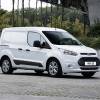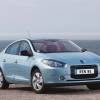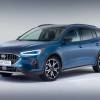
RAC sale - up to 40% off*
• Standard cover from £5.29 a month*
• We get to most breakdowns in 60 mins or less
• Our patrols fix 4/5 breakdowns on the spot
*T&Cs apply.

By Jonathan Crouch
Introduction
Between 2014 and 2022, Ford hoped its petrol/electric Hybrid Mondeo could convert enviro-conscious buyers in the medium range segment. This wasn't a Hybrid of the fashionable Plug-in sort, but it was a Prius-like full-Hybrid, could return over 50 to the gallon in regular use and offered a tax-busting CO2 rating. Plus, by the end of production, it could be had in either saloon or estate guises. Does it make sense as a used buy? Let's find out.
Models
4dr Saloon / 5dr Estate [Titanium, Vignale])
History
Today, Ford offers all kinds of electrified powerplants in its cars, but the first such engine dates back to 2014 and it was the self-charging full-Hybrid unit fitted to the fourth generation Mondeo. It was based around one of the brand's older petrol engines - a 2.0-litre TiVCT unit - and combined it with two electric motors, one to drive the wheels and another to supply regenerative charging, these being powered by a 1.4kWh lithium-ion battery.
To start with, because this confection was primarily targeted at American buyers, it was only available with a four-door body style that few in our market wanted. But in 2019, as part of a package of updates made to this car, Ford widened the hybrid engine's availability to include the estate body shape. And at the same time made the powertrain smoother and improved its regenerative braking capability. The Mondeo Hybrid sold until the MK4 design was deleted from the price lists in mid-2022.
What You Get
If there's one thing that's defined Mondeo design over the years, it's that it's become bigger and more up-market with each passing generation. This fourth generation 'CD391'-series design is no exception to that rule of evolution, but needed an extra layer of polish to justify the sums being asked for plusher variants. And that was applied as part of the revisions made in 2019. As ever, the range was primarily built around two body styles - an estate or a five-door hatch. But opt for the hybrid engine and your choice is between the estate or a four-door saloon.
On to the details of this Ford's exterior design, starting at the front, where four smart crease lines sweep down the power dome bonnet into a trapezoidal front grille that varies in style based on the trim level you've chosen. The design of the lower grille was also refreshed with this facelifted MK4 model and blends into redesigned fog lamp surrounds. These required a slightly more sculpted bumper design that incorporates a more pronounced lower lip spoiler.
Behind the wheel, as part of the facelift, detail changes were made to trim and dashboard architecture. Plus automatic versions of conventional models gained a circular gear selector. Otherwise, things were much as they had been when this MK4 Mondeo was launched back in 2014. Ford struggled to differentiate European-spec examples of this model from the bargain basement trimmed versions of it that it sold in the US and these humbler origins are evident in places, even in the leather-lined top-spec 'Vignale' variant. But it's difficult to fault the exemplary cabin ergonomics; everything falls perfectly to hand and there's an ideal driving position with lots of seat and wheel adjustment. Various different instrument binnacle displays were offered - the Hybrid version features twin 4.2-inch screens either side of a central speedo. Anything else you need to know will be covered off by the 8-inch central 'SYNC 3' infotainment monitor, which delivers the usual audio, navigation and smartphone-mirroring options, plus it can deal with climate settings too.
And in the back seat? Well three big adults across the back seat of an Audi A4 or a BMW 3 Series from this era is a squash that's only slightly improved if you opt for something mainstream like a Vauxhall Insignia or a Volkswagen Passat. Here, it's no problem at all, with superb space for shoulders thanks to the class-leading width of the cabin. Legs and knees are also well catered for thanks to a low centre transmission tunnel and relatively thin front seat backs.
And the boot? Well, the Hybrid model has a huge corpse-like bulge in the floor concealing the HEV system's battery and electric motor, slashing cargo capacity to 403-litres in the estate and just 383-litres in the Hybrid variant's alternative saloon body style.
What You Pay
Please fill in the form here for an exact up-to-date information.
What to Look For
We haven't come across any reliability issues with the Hybrid powertrain, so the comments here are as with any other MK4 Mondeo. Most owners of this 'CD391'-series design that we came across in our survey seemed very satisfied, but inevitably there were a few issues with some cars. One owner had to replace drive shafts in a car with only 12,000 miles on the clock. Another had to change the EGR valve when the engine management light came on. Some owners complained that the alloy wheels showed signs of early deterioration. Another car had a software fault. Make sure you check the SYNC2 infotainment screen and Bluetooth functions thoroughly. And look out for signs of child damage in the back. Insist on a fully stamped-up service history as usual.
Replacement Parts
(approx based on a 2019 Mondeo Hybrid - Ex Vat) An air filter costs around £12 and an oil filter costs in the £5 bracket. Front brake discs sit in the £55 to £84 bracket; for a rear pair, you're looking in the £22-£47 bracket. A cabin filter costs in the £10-£12 bracket. A wiper blade is around £4-£12. Front brake pads are in the £29-£52 bracket; re pads are in the £22-£47 bracket.
On the Road
Unlike the hybrid options offered in this segment in this era by Volkswagen, Skoda and Peugeot, this Mondeo's HEV set-up wasn't one of the pricey plug-in sort, which means this car couldn't offer astonishing all-electric style fuel returns. But then original owners also did without the outlandish asking prices that those brands were asking for their full-hybrid models too. Instead, a Mondeo Hybrid offered the more conventional type of 'self-charging' petrol/electric set-up you'd find in a slightly cheaper but smaller and less powerful model like Toyota's Prius, where the engine cuts in and out to assist electric propulsion as and when required. Ford's third generation Kuga SUV offered this kind of hybrid too, but this Mondeo's set-up was a much older design based around an aging 2.0 TiVCT petrol powerplant that long ago had been deleted from the company's portfolio in its conventional form. Here, that unit was mated to an 88kW electric motor and a 1.4 kWh lithium-ion battery that both sat at the back of the car but drove the front wheels via a power-split 6-speed automatic auto transmission.
That auto 'box decides at any given time whether power should come from the engine, the electric motor, both at once or neither. Plus it includes an extra 'L' setting that forces the engine to rev harder and is intended to help control your speed in tricky downhill conditions. The whole self-shifting package works like the kind of CVT rubber band auto transmission that Toyota and Lexus hybrid products of this period used. Which means that, like those cars, there's often a tendency for the engine not to feel very interested in what your right foot is asking from it. Rest to 62mph is supposed to take 9.2s en route to 116mph, but this car actually doesn't feel anything like that fast. Try to push on a bit and you usually get a flare of revs accompanied by not a great deal of extra forward motion. If you can adjust to the way that this whole set-up refuses to be hurried, you'll possibly bond with it quite well.
Much of the energy that charges the battery is harvested through the regenerative braking process, in later versions of this model achieved much more smoothly without the kind of 'grabby' brake pedal that afflicted this package in its earlier forms. Plus with later models, more energy is harvested when coasting, when it's common for the engine to cut out completely, even at motorway speeds. Despite the fact that we've had this technology now since the turn of the century, it's still quite impressive to be able to watch it all work via the various provided dashboard displays. And the system's ability to allow you to pull away silently on battery-only power always tends to fill you with a smug sense of eco-friendliness. But we're disappointed by the way that the whole package kills any real sense of driving pleasure, which was the thing that always used to set a Mondeo apart.
In the future, Ford will offer better electrified engines than this. For some though, this Mondeo Hybrid will be worth considering if you simply need a cruisy business conveyance and don't want a diesel.
Overall
So, how to summarise? Well Ford tried hard here to promote this car's Hybrid powerplant, but the brand never gained the kind of customer take-up it was seeking from models equipped with this unit, even when it made it available with an alternative Estate body style in 2019. Certainly, the fact that this engine was restricted to the more expensive leather-lined trim levels and couldn't be had with the hatch body shape didn't help.
Ultimately when new, a Mondeo Hybrid was a bit pricey for someone considering a 'Prius'-style self-charging hybrid. And it couldn't interest many business buyers in the larger 'D'-segment because it lacked the clever Plug-in tech that more direct rivals used. The bottom line was though, that this Ford offered by far the cheapest petrol/electric option in the class and that translates into great used market value. A Mondeo Hybrid probably won't have been on your shopping list when considering a car of this kind, but it's definitely worth a look.

![Ford Mondeo Hybrid MK4 [CD931] (2014 - 2022) used car review](https://d1ix0byejyn2u7.cloudfront.net/drive/images/made/drive/images/remote/https_d2yv47kjv2gmpz.cloudfront.net/filestore/4/7/1/1_75a6d5dac73225c/2e8e64e82a882cb529d841c3167538ac/1174_8061d2ca9ddc995_600_400_70.jpg)





